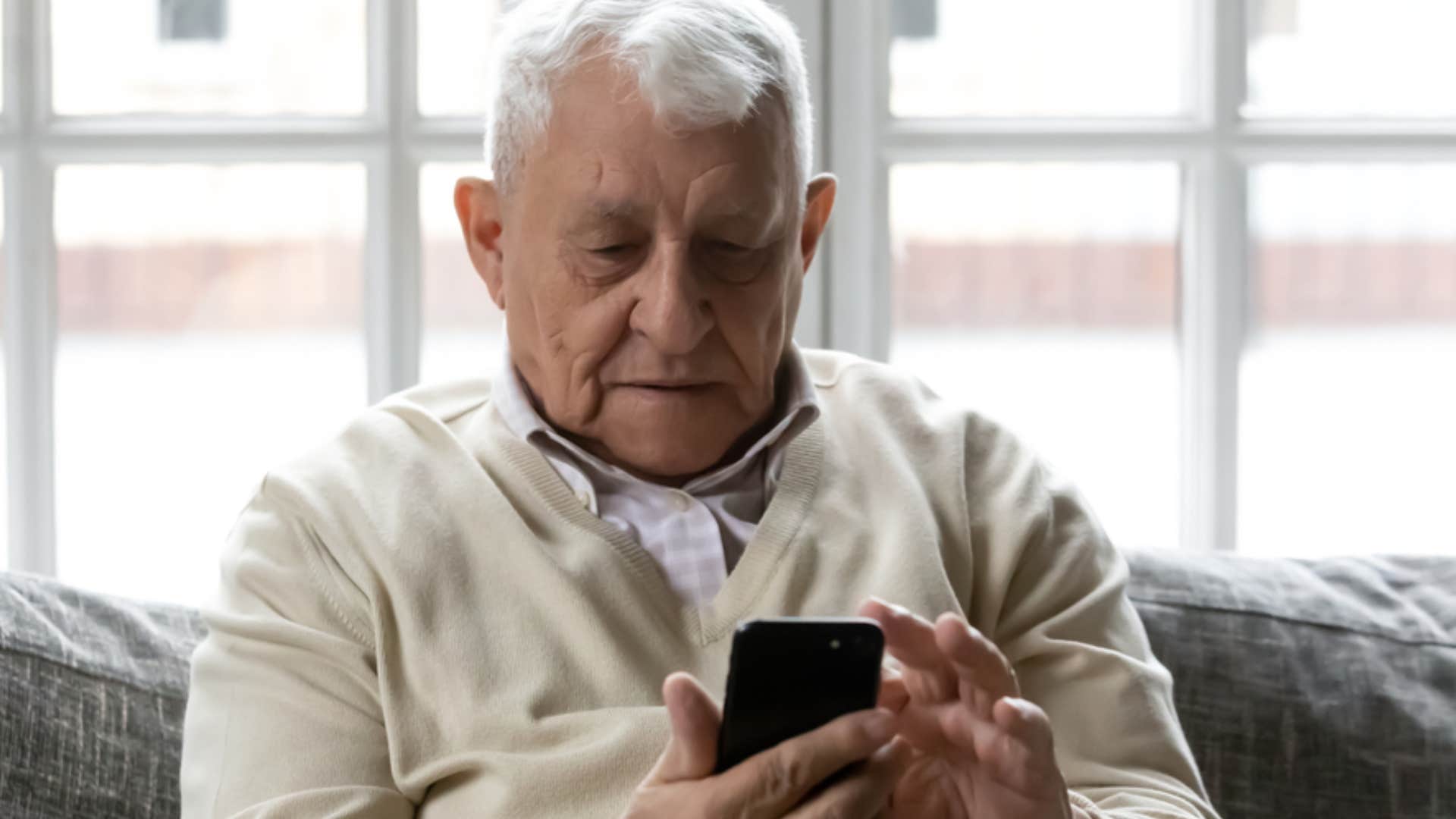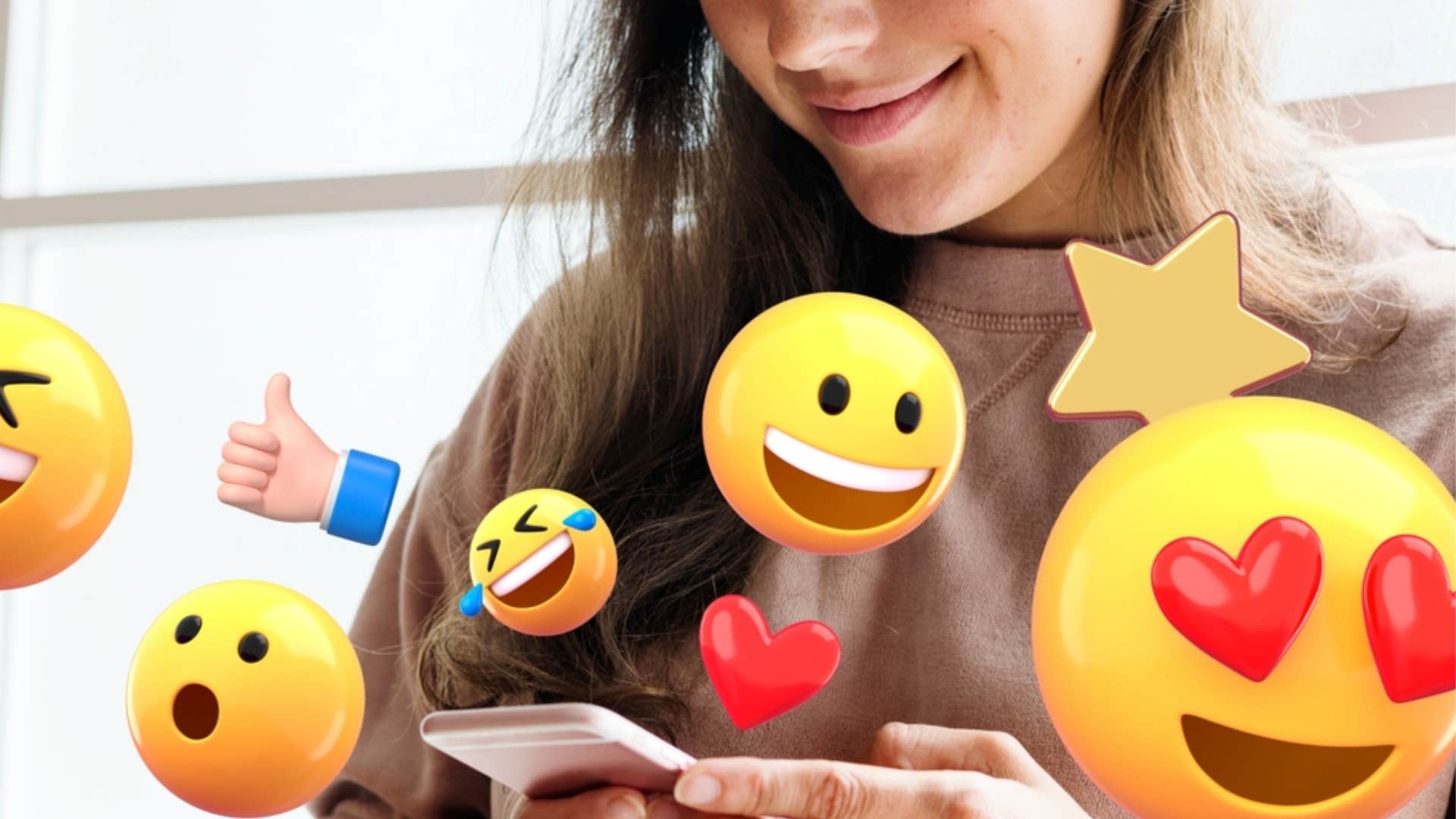11 Outdated Text Messages People Send That Unintentionally Reveal Their Age
Sometimes, a single letter is all it takes to reveal how old someone is.
 GaudiLab | Shutterstock
GaudiLab | Shutterstock It seems that every new generation has developed more innovative and savvy ways to communicate. In recent times, texting has become a widely popular form of communication, with an increasing number of people across all generations preferring a text message over a phone call. Many people prefer texting for its convenience and ease of use — texts can be sent and read at a time that suits the recipient; they are generally less disruptive than phone calls and provide a quick, efficient way to convey necessary information.
That said, there are certain types of text messages that some may find outdated or unusual, especially to more tech-savvy people. There are specific texting habits that people resort to, which can inadvertently hint at their age (or at least the generation they were born into). While it’s perfectly fine for anyone to text however they please, it’s interesting to note that certain patterns often align with specific age groups.
Here are 11 outdated text messages people send that unintentionally reveal their age:
1. ‘Call me when you get this’
 Dragana Gordic | Shutterstock
Dragana Gordic | Shutterstock
For some people, conveying everything they have to say in a text message is just not an option. Still, they want to be courteous and allow the recipient to call them at their convenience.
This was an especially popular text in the early 2000s, when texting was still relatively new to Gen X, as the first SMS text message was sent on December 3, 1992. Thankfully, the concept of voice input allows texters to speak directly into their phone’s microphone and send their verbal thoughts as a text message, so they don’t have to bother with making a call.
However, your Gen X mom or dad will likely still text you to give them a call since they haven't quite mastered the voice-to-text feature yet.
2. ‘K’
 fizkes | Shutterstock
fizkes | Shutterstock
If you were to send this to a Gen Z or Millennial person, they would immediately assume that you were angry with them. This is because many people in younger generations have resorted to replying with just “K” themselves when they’re upset with someone.
For example, their bestie might text them that they need to cancel plans to spend time with their boyfriend, and they don’t necessarily feel like arguing or expressing their hurt feelings. As a response, they type "K" and send. That “K” conveys their annoyance and unwillingness to have a deep conversation.
However, older generations typically use “K” because it's more convenient. Some people just cannot be bothered with typing out an entire “Okay.”
Rest assured, Millennials and Gen Zers: your Gen X relatives who reply with “K” are probably not being passive-aggressive — they just don't understand the significance of that one crucial letter that can make or break relationships.
3. ‘This is [sender’s name]’
 fizkes | Shutterstock
fizkes | Shutterstock
When sending a text message to someone whose number is not saved in their contacts, some people may opt to include their name at the beginning to let the recipient know exactly who is reaching out. This is primarily used in formal text messages, such as a job recruiter contacting a candidate via text.
However, new features such as Caller ID have made it possible for people to make a solid prediction of who might be reaching out to them, even if they don't have that contact saved.
For older generations, such as Gen X and Boomers, it’s understandable that they might still be adjusting to the idea of others automatically recognizing who’s reaching out. Many of them choose to include their names in texts to ensure the recipient isn't surprised.
4. ‘What’s your email?’ (When they want to share a photo)
 fizkes | Shutterstock
fizkes | Shutterstock
Some people in older generations still have not realized that they can send photos and videos via text. If they want to show you pictures of their most recent vacation or newest grandchild, they may ask for your email so they can send them to you.
Boomers are especially fond of email communication. A survey presented at the Americas Conference on Information Systems found that 93% of Boomer respondents used their e-mail daily.
Email has existed long before texting, and some Boomers may prefer to utilize a communication platform they are far more familiar with.
5. A happy birthday text at exactly midnight
 PR Image Factory | Shutterstock
PR Image Factory | Shutterstock
These birthday texts have become extremely prominent among younger generations. We want our closest friends to know just how much they mean to us, and that we are thinking of them the second the clock strikes 12 on their birthday.
These happy birthday messages are usually accompanied by long and gushy paragraphs recounting our favorite memories with them, and confetti and cake emojis. And no, they aren't necessarily staying awake, eagerly waiting until the strike of midnight to celebrate — younger generations often schedule these texts in advance, as it's a standard feature on most phones now.
If you wake up at midnight on your birthday, dazed and confused by a text notification from your Gen Z child, just know that it is their way of expressing just how much they care about you!
They wanted to ensure that their name was the first you saw on your special day.
6. Chain letters or spam
 fizkes | Shutterstock
fizkes | Shutterstock
Millennials and Gen Z likely remember frantically copying and pasting these cryptic chain letter text messages to send to everyone in their contacts, or else bad luck would fall upon them. “Forward this to 10 people or else…” still sends chills down their spines!
Some chain letters promised recipients large sums of money and fortune, depending on how many people the recipient forwarded them to. Others threatened to expose their deepest secret if they failed to forward it to anyone. These chain letters were especially popular in the early 2000s. Now, they are mostly spam or nostalgia messages.
Still, you may find yourself on the receiving end of one now and then from your one Millennial or Baby-Boomer relatives who swore by them back in high school.
7. Double-spacing after every period
 insta_photos | Shutterstock
insta_photos | Shutterstock
According to former middle-school language arts teacher Jennifer Gonzalez, nothing says over 40 like two spaces after a period! This is due to their education and upbringing, which are vastly different from the tech-savvy teachings of today.
“Back when we used typewriters, every character was given the exact same amount of space on the page. That meant the letter 'i' was given the same amount of space as the letter 'm', even though it clearly didn’t need it,” she explained on her blog, Cult of Pedagogy. “This is called monospaced typesetting and it’s, well, spacey. We needed that extra space between sentences to make it easier to see the beginning of new sentences.”
By the time computers were introduced, there was no more need for monospaced typesetting. However, some people from older generations found it hard to break a habit that had been ingrained in them for so long, and still opt to double-space after every period in their text messages. “We got our papers marked wrong if we didn’t. It takes a long time to unlearn that,” Gonzalez noted.
Their learned behavior may be incredibly apparent in their text messages, and confuse those in younger generations who were born long after the extinction of typewriters and basic word processing computer programs.
8. Signing texts
 fizkes | Shutterstock
fizkes | Shutterstock
We’ve likely received a text from an older relative that was signed with their name (e.g., "Love, Grandma"). Even though we know who sent us the message before we even read the text (thanks to caller ID or our saved contact list), people from older generations tend to sign their texts with their name for personalization and connection purposes.
Similar to signing a handwritten note on paper, they recognize that using their name in a text message can make it feel more personalized and genuine, making the recipient feel seen and valued.
9. Ending every sentence with ‘lol'
 Krakenimages.com | Shutterstock
Krakenimages.com | Shutterstock
You’ve likely noticed this if you’ve ever texted with a Millennial or Gen Zer. Even if the message is not laugh-worthy, some of them still feel the need to add "lol" at the end of every sentence.
They may say, "I’m going to the grocery store lol" or "Sorry I’m getting back to you so late lol." While the sender may not literally laugh out loud when they verbally express a sentence, they may use "lol" in text messages to soften the tone. Without facial expressions or vocal tone, text messages often seem harsh. “LOL” adds a casual, friendly vibe to the conversation so it doesn’t come off as too blunt or serious.
Now, "lol" is ingrained into the everyday vocabulary of most Millennials and Gen Z. "We use 'lol' as a way of downplaying a statement; adding irony, levity, humility, empathy, or commiseration; expressing amusement; or just neutral acknowledgment,” a Vice article notes. "No longer simply an internet acronym that’s entered the mainstream, 'lol' is an example of how language evolves over time, adheres to new grammatical rules, and creates community around the people that use it."
10. Using excessive emojis
 Rawpixel.com | Shutterstock
Rawpixel.com | Shutterstock
According to a Statistica online survey conducted in the U.S. in April 2022, Gen Z respondents reported using emojis in their online communication 57% of the time. Millennials included emojis in their texts and instant messages 55% of the time.
Emojis have gained popularity in recent years since they can convey tone and emotion that can be difficult to express through text alone. Thanks to emojis, people can add a layer of emotional nuance to their messages.
For example, if your friend sends you a funny GIF, instead of relying on "That’s so funny!" or "LOL," you may respond with the laughing face emoji to depict your reaction.
Younger generations are not the only ones who use emojis in their everyday text conversations. Gen X and Boomers have become completely enthralled by the concept of emojis, and you may find your Boomer mother sending a “Love you!” text followed by an entire row of heart emojis all in different colors.
11. ‘R u there?’
 Prostock-studio | Shutterstock
Prostock-studio | Shutterstock
These abbreviated messages were especially prominent during the flip-phone era when texting was a lot more complicated and time-consuming (Millennials will never forget T9 texting!) It could take people over a minute to type out a singular word.
Therefore, they opted to replace words with letters that had similar pronunciations (example: ‘R’ = “Are”). Although flip phone users have transitioned to smartphones with full keyboards that facilitate quicker texting, they still cling to the habit of using abbreviations like "R,” “U,” and others that they can now type more swiftly.
Megan Quinn is a staff writer with a bachelor's degree in English and a minor in Creative Writing. She covers news and lifestyle topics that focus on justice in the workplace, personal relationships, parenting debates, and the human experience.

